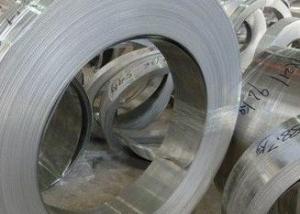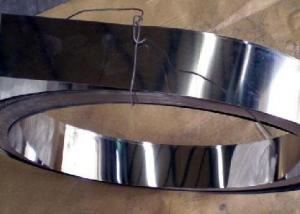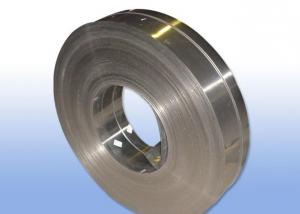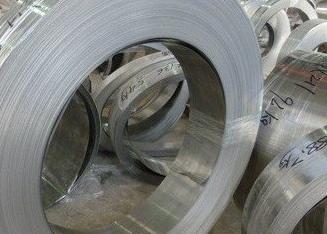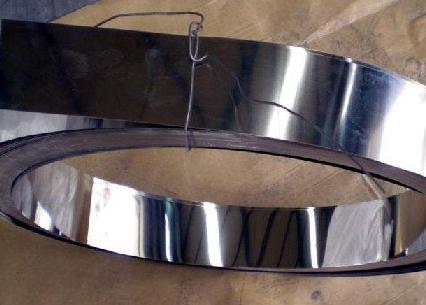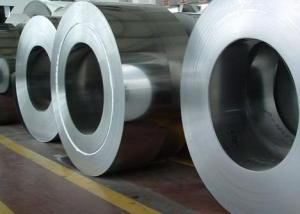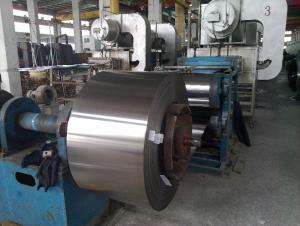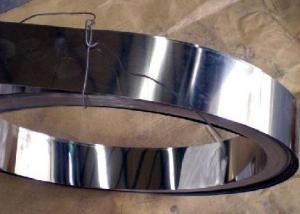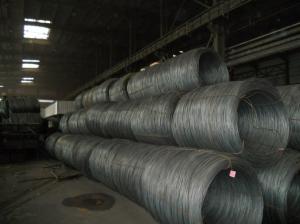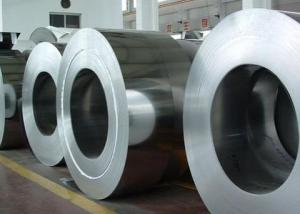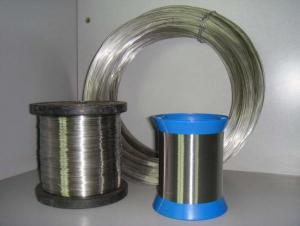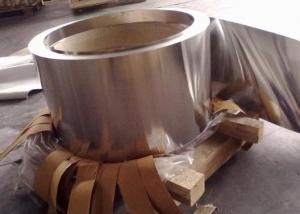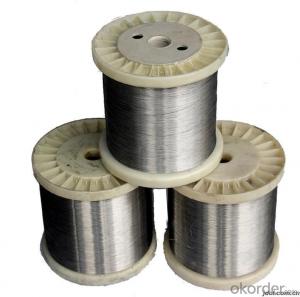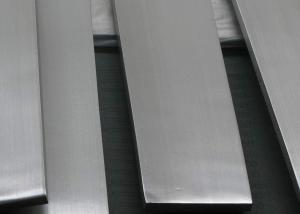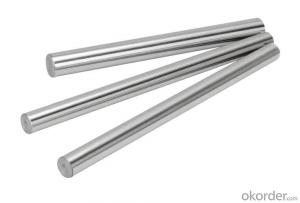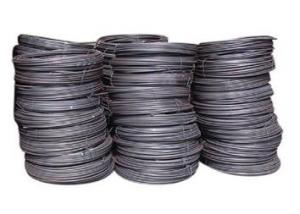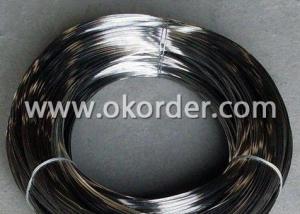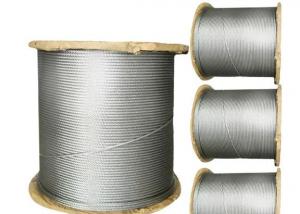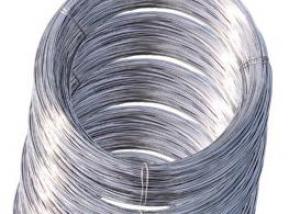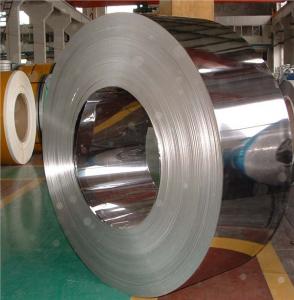Stainless Steel Strips 304
- Loading Port:
- China Main Port
- Payment Terms:
- TT or LC
- Min Order Qty:
- 1 Ton m.t.
- Supply Capability:
- 1000Tons Per Month m.t./month
OKorder Service Pledge
Quality Product, Order Online Tracking, Timely Delivery
OKorder Financial Service
Credit Rating, Credit Services, Credit Purchasing
You Might Also Like
- Q: Can stainless steel wire be used for springs in the oil and gas industry?
- Yes, stainless steel wire can be used for springs in the oil and gas industry. Stainless steel is known for its corrosion resistance, high strength, and durability, making it suitable for the demanding and harsh conditions often encountered in the oil and gas sector.
- Q: Can stainless steel wire be used for netting or mesh?
- Yes, stainless steel wire can be used for netting or mesh. Stainless steel is a popular choice for netting and mesh due to its high durability, corrosion resistance, and strength. It is commonly used in various applications such as safety barriers, fencing, and filtration systems.
- Q: Can stainless steel wire be used for wire rope thimbles?
- Wire rope thimbles can indeed utilize stainless steel wire. These thimbles serve the purpose of safeguarding and enhancing the wire rope loops, averting any potential damage or distortion. Stainless steel wire possesses remarkable attributes such as immense strength, corrosion resistance, and longevity, rendering it an ideal option for thimbles. Its capability to endure substantial loads and endure harsh environmental circumstances makes it suitable for diverse applications, encompassing marine, industrial, and outdoor utilization. By employing stainless steel wire rope thimbles, wire ropes are bestowed with additional safeguarding and prolonged lifespan, guaranteeing their secure and efficient utilization.
- Q: Is stainless steel wire resistant to UV rays?
- Yes, stainless steel wire is generally resistant to UV rays. Stainless steel is known for its corrosion resistance, and this extends to its ability to withstand the effects of UV rays. While prolonged exposure to direct sunlight may cause some discoloration or minor surface changes, stainless steel wire is unlikely to degrade or lose its structural integrity due to UV radiation. This makes it a suitable choice for outdoor applications, such as fencing, outdoor furniture, and architectural features, where it will be exposed to sunlight for extended periods. However, it's important to note that the specific grade and finish of stainless steel can affect its UV resistance, so it's always advisable to consult the manufacturer's recommendations for the best performance in outdoor environments.
- Q: Stainless steel plate, how much silk is what?
- A filament is a unit of length.In mathematics 10 decimillimeter centimillimeter decimillimeter =1 mm, 10 =1
- Q: Can stainless steel wire be used for springs in the food industry?
- Indeed, stainless steel wire is a viable option for utilizing springs within the food industry. The food industry has a strong preference for stainless steel as it possesses exceptional qualities including remarkable resistance to corrosion, hygienic attributes, and the ability to endure high temperatures and harsh cleansing agents. Stainless steel springs find application in a variety of areas such as food processing machinery, packaging equipment, conveyor systems, and industrial cooking apparatus. The utilization of stainless steel guarantees that the springs remain impervious to rust and contamination, thus ensuring their suitability for employment in food processing and handling. Additionally, stainless steel is effortless to clean and maintain, thereby upholding the integrity and safety of food products.
- Q: Can stainless steel wire be used for wire jewelry making?
- Yes, stainless steel wire can definitely be used for wire jewelry making. It is a popular choice among jewelry makers due to its durability, strength, and resistance to tarnish. Stainless steel wire is available in different gauges, making it suitable for various jewelry-making techniques such as wire wrapping, wire weaving, and creating intricate designs. It is also versatile and can be used to create a wide range of jewelry pieces, including necklaces, bracelets, earrings, and even rings. Additionally, stainless steel wire is hypoallergenic, making it a great option for individuals with sensitive skin or allergies to other metals.
- Q: Is stainless steel wire resistant to humidity?
- Yes, stainless steel wire is highly resistant to humidity. Stainless steel is an alloy that contains a minimum of 10.5% chromium, which provides it with excellent corrosion resistance. This makes it suitable for use in humid environments where other materials may rust or corrode. Stainless steel wire can withstand high levels of humidity without experiencing any significant degradation in its strength or durability. Additionally, stainless steel's resistance to humidity also makes it ideal for outdoor applications, marine environments, and industrial settings where moisture is present.
- Q: Is stainless steel wire resistant to chloride corrosion?
- Yes, stainless steel wire is generally resistant to chloride corrosion. This is because stainless steel contains a high percentage of chromium, which forms a protective oxide layer on its surface. This oxide layer acts as a barrier, preventing the penetration of chloride ions that can cause corrosion. However, the level of resistance can vary depending on the specific grade of stainless steel used. Some grades, such as 304 and 316, offer excellent resistance to chloride corrosion and are commonly used in marine environments. On the other hand, lower grades of stainless steel may be more susceptible to chloride corrosion. Therefore, it is important to choose the appropriate grade of stainless steel wire based on the specific application and environment to ensure optimal resistance to chloride corrosion.
- Q: Is stainless steel wire suitable for wire rope slings?
- Yes, stainless steel wire is suitable for wire rope slings. Stainless steel is highly resistant to corrosion and has excellent strength and durability, making it an ideal choice for applications where wire rope slings may be exposed to harsh environments or chemicals. Additionally, stainless steel wire rope slings offer good flexibility, allowing them to be easily maneuvered and used for various lifting and rigging purposes.
We specialize in the production of stainless steel seamless and welded pipe. We have more than 10 years of experience in the market, and the company has advanced technology and first-class equipment.The company obtained the ISO9001: 2000 quality system certification, as well as PED and GOST9941 -. 81 certification. Our products are exported to Germany, Russia, Mexico, the United States, Brazil, Italy, South Korea, India and other countries.
1. Manufacturer Overview
| Location | Zhejiang,China |
| Year Established | 2000 |
| Annual Output Value | Above US$8.3 Million |
| Main Markets | Europe, America |
| Company Certifications | ISO9001:2000 |
2. Manufacturer Certificates
| a) Certification Name | |
| Range | |
| Reference | |
| Validity Period |
3. Manufacturer Capability
| a) Trade Capacity | |
| Nearest Port | Shanghai |
| Export Percentage | 30% |
| No.of Employees in Trade Department | 30 People |
| Language Spoken: | English;Chinese |
| b) Factory Information | |
| Factory Size: | Above 80,000 square meters |
| No. of Production Lines | Above 7 |
| Contract Manufacturing | OEM Service Offered;Design Service Offered |
| Product Price Range | Average |
Send your message to us
Stainless Steel Strips 304
- Loading Port:
- China Main Port
- Payment Terms:
- TT or LC
- Min Order Qty:
- 1 Ton m.t.
- Supply Capability:
- 1000Tons Per Month m.t./month
OKorder Service Pledge
Quality Product, Order Online Tracking, Timely Delivery
OKorder Financial Service
Credit Rating, Credit Services, Credit Purchasing
Similar products
Hot products
Hot Searches
Related keywords
